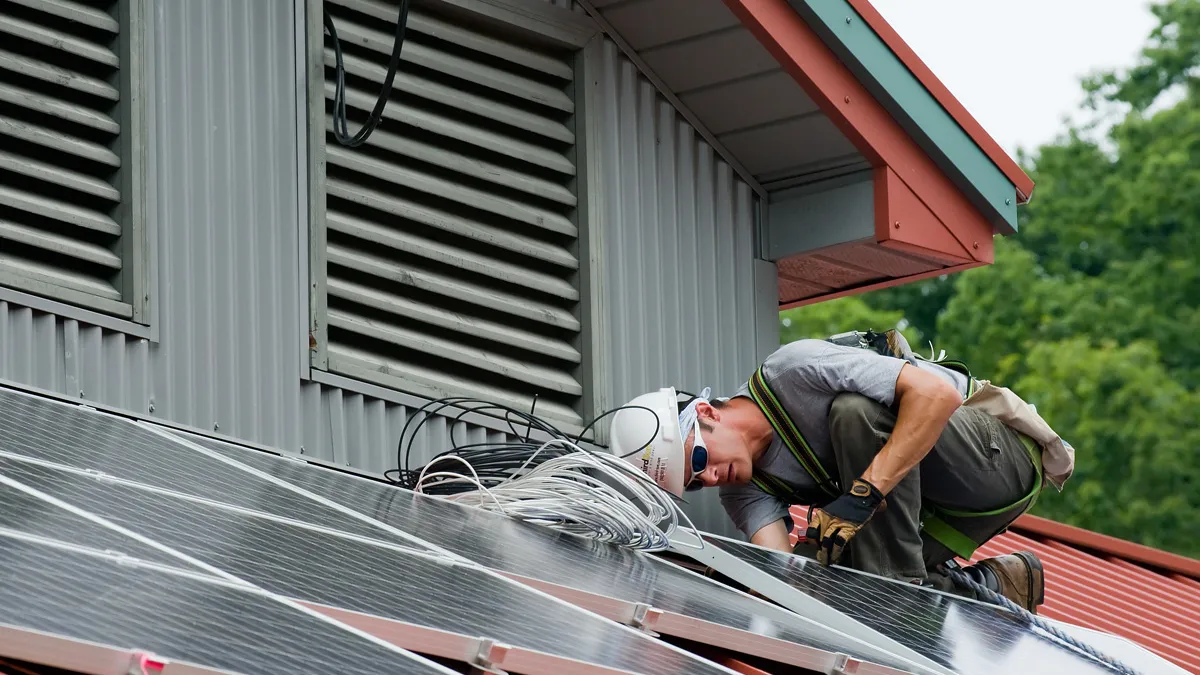It was not so long ago that the utility known as PSEG-Long Island was run by the much-maligned Long Island Power Authority (LIPA). Public Service Enterprise Group, a holding company whose main subsidiary is New Jersey utility PSE&G, was tasked with managing the operations of LIPA's allegedly outdated grid starting January 1, 2014.
Today, the utility formerly known as LIPA seeks to reinvent itself. On the heels of New York's ambitious Reforming the Energy Vision proposal, which seeks to place greater emphasis on the roles that rooftop solar, demand-side management and microgrids will play in the state's future distribution grid, LIPA has proposed its own regimen of residential energy efficiency, demand response and distributed generation to stave off heavy investment in generation.
Utility 2.0
The proposal is "part of a bigger strategy," Michael Voltz, PSEG-Long Island's director of energy efficiency and renewables, told Utility Dive.
"New York is probably moving a little more rapidly than other parts of the country," Voltz said. PSEG-Long Island already sees about 10% of its peak demand coming from distributed resources. The utility has about 9,000 residential photovoltaic solar systems in its territory, roughly 1% of homes on Long Island, and is now looking to boost the mid-sized customer market.
"The smaller markets are already being serviced by our existing programs," Voltz said. PSEG-Long Island's solar program has been growing for the last decade, adding roughly 2,000 customers annually. "We felt that, as part of Utility 2.0, we'd go after that mid-sized market," he said, including installations that might fit on the roof of a big box retail store.
PSEG-Long Island in July filed its Utility 2.0 Plan, a sketch of how the it expects to transition into a new era of resources. The plan must be approved by LIPA and reviewed by the New York State Department of Public Service. Among the programs are incentives aimed at solar installations greater than 200 kW but less than 2,000 kW. Projects of that scale and located in the New York Independent System Operator’s Zone K are not currently eligible for incentives offered by the New York State Energy Research & Development Authority or LIPA.
As the utility is primarily a summer peaking system driven by residential cooling load, the bulk of the Utility 2.0 investment is aimed at a ratepayer's living room. The $200 million long-range plan is spearheaded by two initiatives estimated to provide 130 MW of annual demand savings — the commercial solar incentives and growth of the utility's programmable thermostat initiative.
Commercial solar and programmable thermostats
The residential program provides thermostats to customers and is aimed at boosting the existing direct load control program with modern technology and increased customer participation. The $60 million investment should return 100 MW in annual demand savings, PSEG-Long Island estimated. The targeted expansion of solar behind the meter is a $45 million investment the utility estimates will save 30 MW in annual demand by 2017 and will provide 100,000 MWh of annual energy savings.
"We believe that there may be the potential to displace currently planned generation expansion through a reassessment of resource needs coupled with accelerating investments behind the meter at customer facilities in more energy efficient equipment with direct load control capability," the utility told state regulators.
Under the program, approved applicants "would receive an up-front payment along with two performance payments in order to encourage the installation of high performing systems," the utility said. "Qualified applicants would be competitively selected based on the incentive bid received."
Rounding out the plan's more pricey initiatives, PSEG-Long Island is also proposing two $30 million programs, one aimed at incremental energy efficiency program and another at a conservation program for hospitals.
The utility in the home
Key among the plan's goals is to boost the use of information technology, which the utility said can help reduce power demand by giving customers more control and information and by integrating more efficient resources.
"Customers are becoming more comfortable with real-time information through web-based platforms and applications on smartphones and tablets," PSEG-Long Island said. "Technology improvements and policy support is driving interest and more opportunity for energy efficiency, demand response, and distributed generation, creating new value propositions for customers and third-party energy service
providers."
The utility's plan points out that up to 20% of residential demand is aimed at "comfort-providing resources," like a home cooling system. Those resources "could be better managed by providing information and feedback to customers and automating appliance and building systems to accommodate customer needs and preferences," the utility said in its plan.
The utility is proposing to to modernize and expand its Programmable Thermostat Program to provide up to 100 MW of peak demand reduction. That estimate includes retaining an existing 35 MW of peak demand reduction achieved in 2013 and adding an incremental 65 MW to the program. The utility would replace thermostats for some customers already in the program and work with vendors of direct load control systems to develop a request for proposals to add central air conditioning and pool pump participants to the program.
"We intend to allow customer incentives to encourage participation and recognize the value of this distributed resource," the utility said. And as a related pilot program, PSEG-Long Island is proposing to test “smart plugs” capable of monitoring plug-in appliances, "with a focus on capability to cycle room AC units for peak reduction and overall energy savings."
PSEG-Long Island also proposed an $8 million behavioral energy efficiency program that would deploy an energy information platform to residential customers. "The program would be a first step on Long Island to empowering mass market customers to manage their energy use by enhancing visibility of energy consumption data and peer benchmarks," the utility said.
After facing widespread discontent over the extended blackouts set off by Hurricane Sandy, Long Island's electric utility is pivoting towards a new future. With the deployment of solar incentives and a movement into the home, the utility may just be getting there.























